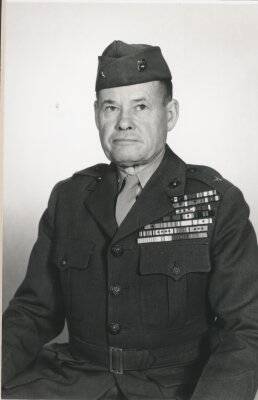ANATOMY OF A FIRE MISSION
Showing how Infantry and Artillery fight together
Story by Paul Marquis
A fire mission starts with a call on the radio. Picking up the receiver, the battery Executive Officer hears the words that never fail to excite an artilleryman: "Contact fire mission, battery adjust." The Exec repeats the order to the guns, which prompts the crew to start a sequence of carefully rehearsed moves. Bravo Battery made do with four or five men to a gun. While two men can operate the gun, five seasoned artillerymen could maintain peak performance over an extended period.
A typical gun crew consists of a Section Chief, an Assistant Section Chief, a gunner, and an "A" gunner, loader, and powder man. In most cases, the loader did both "load and powder." Meanwhile, the Exec, using an aiming circle, which is an instrument much like an engineer's transit equipped with a scope (capable of both day and night viewing), "surveys in" each gun. During this procedure, each gunner points a telescope at the aiming circle. Using this as a reference point, the gunner makes sure his gun tube is pointed in the correct direction. By this time, Fire Direction Control (FDC) has made all the calculations, determining the range, deflection, elevation, and other firing data, in order to let the guns know what powder charge to use, what angle at which to level the guns, direction, and type of round and fuse to use.
The call for artillery starts as an infantry company advances through the jungle in single file, twenty meters behind the point man. In the middle of the column, near the company commander, marches the Forward Observer (FO); he follows behind the radioman. If a bullet hits the radioman, it has to go through that man's chest and the radio before reaching the FO, who is an extremely valuable member of the company. The dense jungle makes heavy going for the company, which stays off trails to avoid ambushes and booby traps.
The FO's concern is to keep track of the unit's position and to stay in contact with the distant battery of 105 Howitzers. From in front of the company, a burst of small arms fire breaks the stillness. As the Marines hit the ground, someone yells "Sniper!" The company commander checks out the situation and decides to have the FO call for artillery. Having anticipated that request, the FO has radioed the battery as soon as he hits the ground to "contact fire mission" and gives the location (a six-place map grid designation indicating a point on the ground to within 100 meters), and has asked for "Willie Peter" (white phosphorous) shell with a mechanical time fuse. As the company commander asks for the fire, the radioman says, "Shot," which means the shell is on its way and will explode in five seconds. The shell detonates in the air, mottling the sky with white smoke above the jungle canopy. The FO lines up his compass in the direction of the burst. The aim must be adjusted to the right toward the front of the column and towards the sniper. He radios the correction, "Danger close (the artillery is being asked to fire within 600 meters of the Marine position). "Right 200, drop 200 shell; HE" (high explosive shells, which are fused with a point detonating fuse to explode upon impact, will now be fired by two of the guns in the battery). Again the radioman says "Shot," and five seconds later, the shells explode but the shells are too distant. The FO orders the battery to drop another 100 meters. The next explosions are just right, as the shells fall through their high trajectory and explode in front of the Marine positions. Most of the resulting fragmentation falls out, away from the Marines. A backwash of pebbles, wood fragments, and occasional pieces of metal pelt the helmets of the front ranks, as they hug the ground.
This is what close artillery support means. The company commander, the FO, the point platoon leader, and the artillery battery have thought and fought as one. Only a little ammunition has been expended; seven rounds in all. Best of all, no Marine lives have been lost.
Given the difficulty of target acquisition, and the need for duplicate safety checks, many artillery batteries averaged about five minutes response time. Some batteries responded in less than two minutes. The Marines at Khe Sanh managed to reduce this to an incredible forty seconds. Bravo Battery never stayed in any one place for any length of time, moving from DaNang to Khe Sanh with many stops in between. Bravo Battery had to stay within range of 2/3/3 at all times. They were on the float with 2/3/3 and fought in the Hill Fights, with the guns positioned at Khe Sanh. Bravo fired in excess of 13,000 rounds in Hills 881 and 861. Sappers overran Bravo Battery on 28 August 1968, with four Marines receiving stateside wounds. We were overran once before that as well, Bravo Battery lost three men (KIA) in an ambush on 18 April 1968 and mourns the loss of many other Bravo Marines and Forward Observers.
Paul Marquis
Web Master
STARTING FROM 25 OCT 2005
BRAVO BATTERY


Infantry and Artillery
BRAVO BATTERY FORWARD OBSERVER

 | ||||||
CHESTY SAYS:
WHERE A GOAT CAN GO, A MAN CAN GO, WHERE A MAN CAN GO, HE CAN DRAG A HOWITZER.
 | ||||||
 | ||||||

